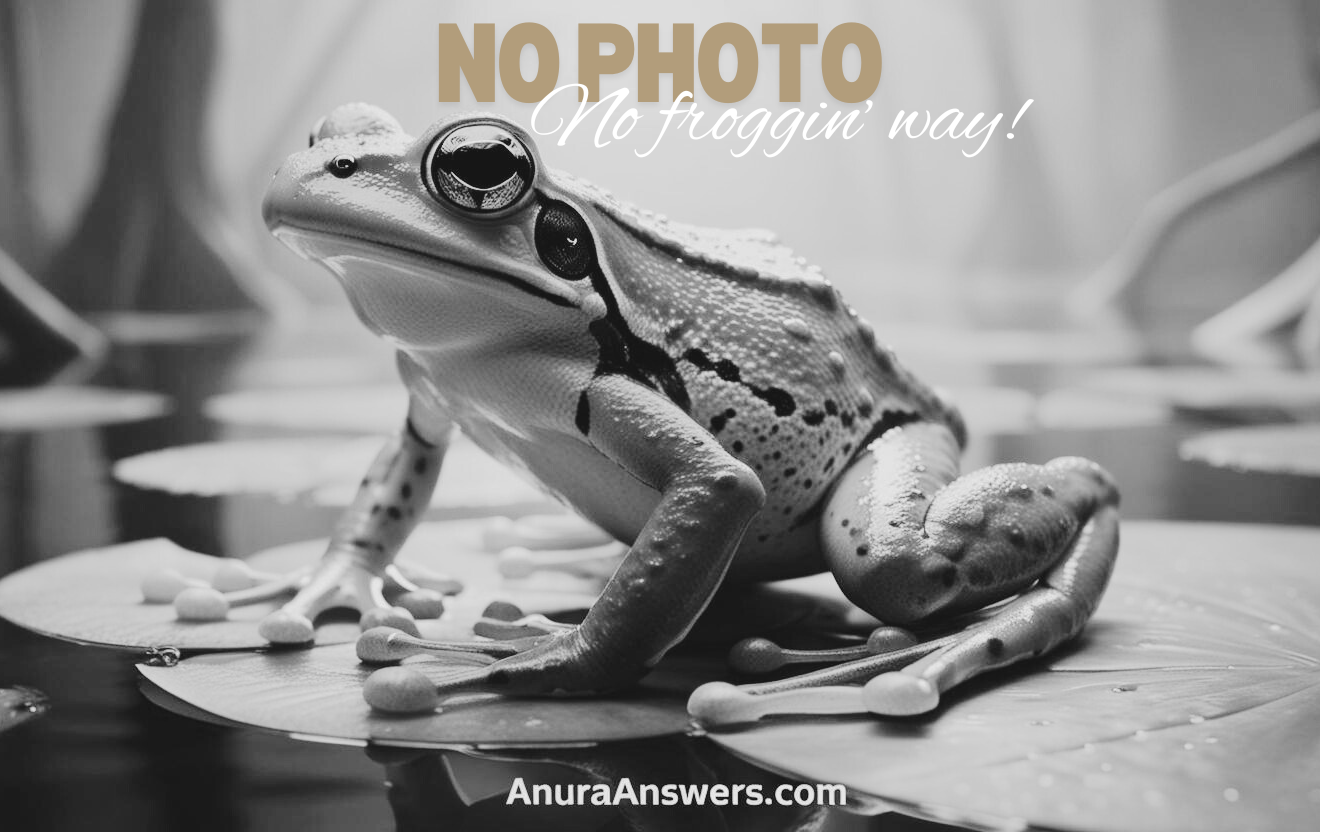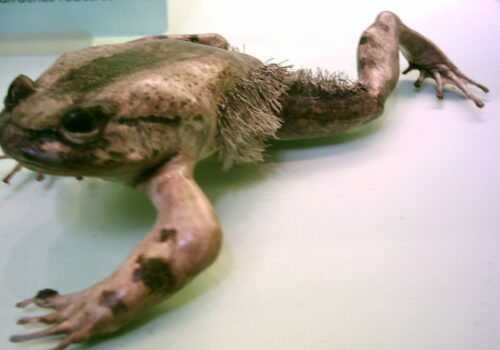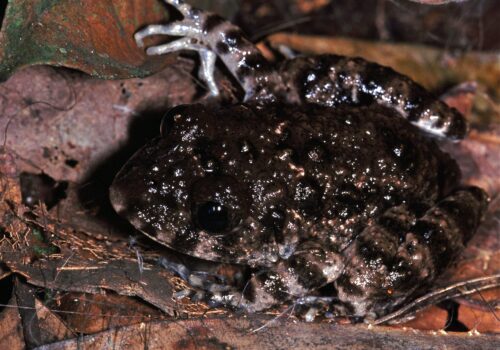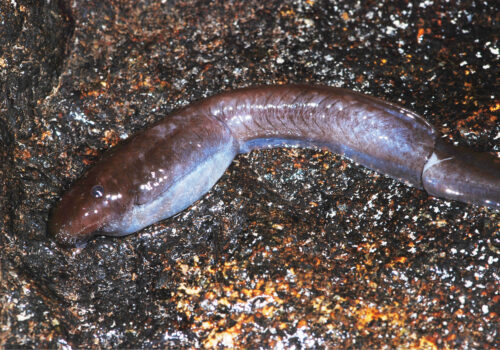Leptodactylodon stevarti: The Secretive Jewel of Central Africa’s Rainforests#
Secretive, elusive, and almost poetic in its mystery, the frog known as Leptodactylodon stevarti dwells hidden among the verdant foliage and rushing streams of Central Africa’s lush rainforests. Despite the countless iconic species that dominate the world’s imagination—the elephants marching majestically along savanna paths or gorillas reclining in mist-shrouded mountain forests—it is often the quiet, overlooked creatures that bear testimony to the intricate beauty and ecological complexity of these wild landscapes. Such is the tale of this delicate amphibian—small yet vibrant, uncommon yet invaluable, a witness to nature’s exquisite balance.
Officially named and described in 2008, Leptodactylodon stevarti belongs to the diverse arthroleptid family of frogs, a group characterized by their cryptic existence and fascinating life-history traits. With its modest body size and distinctive coloring, this species may not draw immediate attention in the rainforest’s vibrant tapestry. But look closer, and one discovers a shining example of adaptation, resilience, and ecological harmony—qualities that embody the profound interconnectedness of life in its fragile forest home.
Taxonomy and Classification#
Classified scientifically as Leptodactylodon stevarti, this amphibian belongs to the family Arthroleptidae, a lineage known for its terrestrial frogs commonly referred to as egg frogs or squeaker frogs. Within this family, the genus Leptodactylodon includes several species typically found in the Central African region, many of them highly specialized for particular ecological niches. Named in honor of notable botanist Tariq Stevart, whose work has contributed significantly to understanding forest biodiversity, L. stevarti itself was officially described relatively recently, highlighting how much remains to be uncovered in African rainforests.
Finding its close relatives among similarly secretive amphibians adapted perfectly to damp, streamside habitats, L. stevarti represents a lineage with distinctive evolutionary strategies for existing harmoniously within the delicate rainforest ecosystem. These frogs’ genetic and morphological characteristics continue to intrigue researchers, providing keys that help us decode the evolutionary mechanisms driving biodiversity in this part of the world.
Natural Habitat#
A Jewel Beneath the Forest Canopy#
Leptodactylodon stevarti occupies a specialized habitat within the lush rainforests of Cameroon, Central Africa. Specifically adapted to the damp, shaded understory near clear, flowing streams, these frogs find sanctuary amid moist leaf litter, rotting logs, and dense fern-covered ground. Their preference for humid, wet microhabitats close to cascading waters highlights the delicate balance required by such amphibians to thrive.
These enigmatic frogs are significantly tied to pristine primary forest settings. Areas relatively untouched by logging or agriculture offer them abundant food, ideal shelter, and the clean, oxygen-rich waters necessary for breeding and tadpole development. Here, beneath the towering trees and amidst gently dripping leaves glistening with rain, L. stevarti lives an inconspicuous yet vital role.
The climate and ecology of these rainforests have shaped a world that pulses gently with life hidden in plain sight. Amid the carpet of vegetation, each step may uncover a frog—its presence not always visible but unmistakable for the keenest observer. The verdant undergrowth and soft, moss-covered stones seem purposefully designed as stages upon which this shy creature discreetly performs its essential daily rituals.
Physical Characteristics#
A Mosaic of Evolutionary Adaptation#
Leptodactylodon stevarti is modest in size, typically measuring no more than a few centimeters in length—making it easy for the untrained eye to overlook among the forest floor’s visual complexity. But a careful observer finds delight within this small, exquisite animal. Its coloration, a subtle mosaic of browns, greys, and richly patterned darker blotches, allows it to vanish seamlessly among fallen leaves, soil, and rocks. Each one resembles an intricate artwork painted directly by nature’s hand, an intimate form of camouflage that is simultaneously remarkable and practical.
The frog’s body exhibits noteworthy adaptations. Specially adapted limbs allow agile movements across slippery leaf litter and rocky streambeds. Its skin, moist and permeable, enables gas exchange and hydration critical for amphibian survival. Large eyes positioned strategically atop its head assist in spotting insects, spiders, and other small prey even while partially concealed beneath debris. Morphologically refined yet humble, every trait of L. stevarti signifies an evolved harmony with its environment.
Behavior and Life Cycle#
Masters of Subtlety and Silence#
Beneath a shimmering canopy of green leaves, Leptodactylodon stevarti maintains a quiet livelihood, rarely giving itself away except perhaps through the occasional subdued call during rainy, humid nights. Its behavior, largely nocturnal, centers around avoiding predators and searching for nourishment. Moving deliberately through the shadows, hunting tiny insects and other invertebrates, has provided the species an efficient, secure means of sustenance.
Breeding occurs alongside clear rainforest streams, vital arteries of life that nourish the forest ecosystem. Males engage in subtle territorial displays, emitting gentle but distinct vocalizations to attract mates. Females lay small clutches of eggs hidden in secluded damp crevices or directly under wet leaves near flowing water. After hatching, the aquatic tadpoles emerge and mature within these crystal-clear streams—developing rapidly but vulnerable to predators, water quality deterioration, and environmental disturbances. The careful selection of nesting sites demonstrates remarkable parental care, a rarely noticed but profoundly intriguing feature of these frogs’ natural history.
Ecological Role#
Guardian of Gardeners and Pest Controllers#
Small yet impactful, Leptodactylodon stevarti serves numerous significant ecological functions within its rainforest habitat. As voracious consumers of insects and other terrestrial invertebrates, these amphibians contribute substantially to the regulation of insect populations—a role that indirectly benefits forest plant communities by controlling herbivore numbers that might otherwise overrun and damage plant leaves and seedlings.
Equally important, amphibians like L. stevarti act as biological indicators of environmental health. Their permeable skins, sensitive reproductive habits, and aquatic larvae make them incredibly responsive to subtle changes in forest ecosystem integrity. Declines in frog populations often serve as early warnings of environmental degradation, signaling issues such as pollution, climate change effects, habitat destruction, or emerging diseases.
Threats and Conservation Status#
An Urgent Need for Protection#
Currently listed by the International Union for Conservation of Nature (IUCN) as Vulnerable, Leptodactylodon stevarti faces increasing challenges and threats, primarily linked to habitat loss and fragmentation. Expanding agricultural practices, unsustainable logging operations, mining activities, and other human developments disrupt their specialized habitat, diminish water quality, and degrade the very ecological resources on which these frogs depend.
Climate change enhances these pressures further; changes in rainfall patterns, increasing temperatures, and unpredictable weather extremes create unfavorable conditions. Efforts to monitor population trends, protect key habitat corridors, and implement stringent conservation legislation offer valuable pathways to safeguard this sensitive frog, alongside numerous other rainforest-dependent species.
Cultural and Scientific Significance#
Although relatively unknown in popular culture, Leptodactylodon stevarti symbolizes the value of biodiversity to ecological understanding and scientific inquiry. Discovering and studying these frogs have provided researchers new insights into amphibian evolution, speciation processes, and adaptation to specialized niches. Scientifically, each discovery enriches our collective conservation awareness even further, emphasizing the importance of preserving such delicately balanced subtleties of biodiversity.
Conclusion#
Far from mere curiosities, species like Leptodactylodon stevarti are integral components within the complex artistry of their fragile rainforest world. Appreciating this amphibian illuminates the profound interconnectedness of habitats we risk losing daily. To protect the environments that sustain secretive beauties such as L. stevarti is to ensure the vibrant continuation of Earth’s biological heritage. Let this story awaken curiosity, inspire appreciation, and motivate active steps towards conservation—for this silent rainforest frog, and for all the quiet wonders of nature yet waiting to be discovered.










